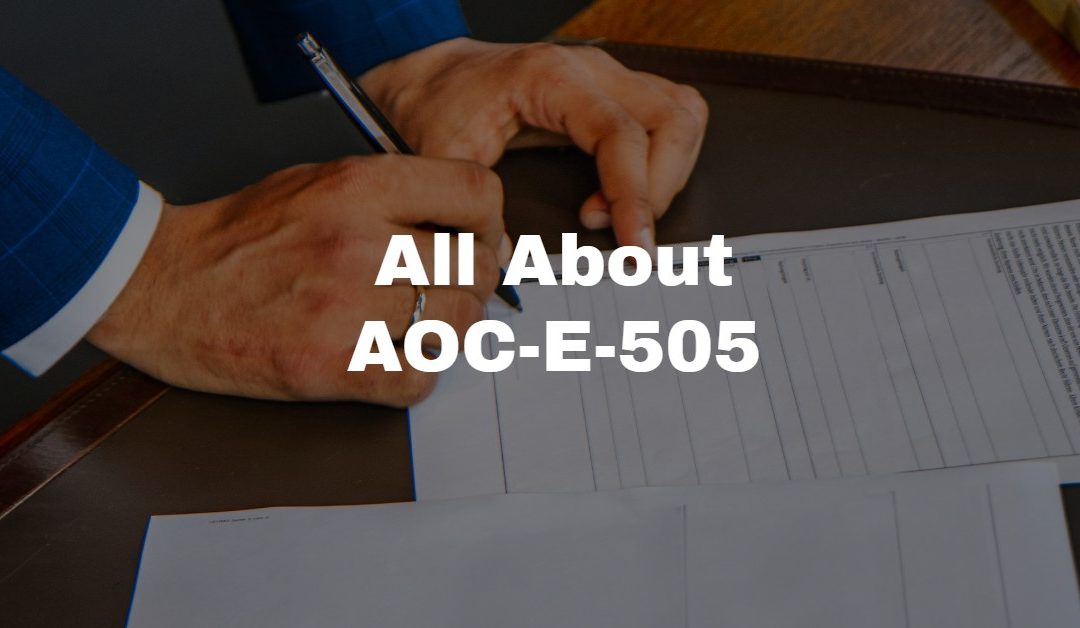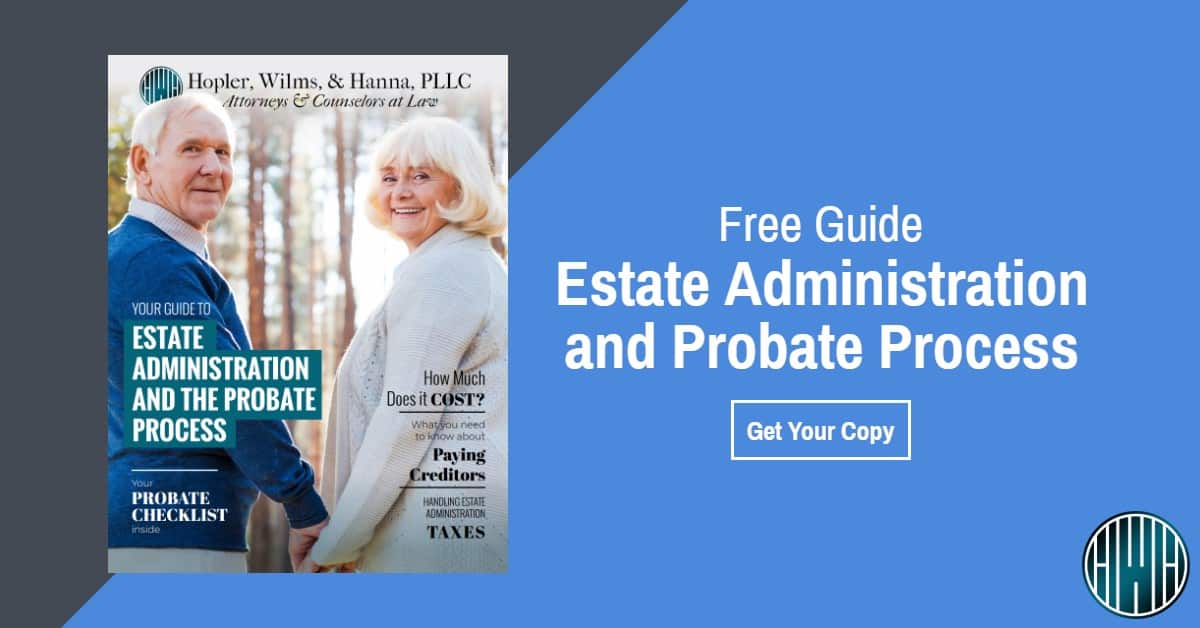When you are appointed as the executor of an estate of a deceased person in the State of North Carolina, you are signing up for a litany of obligations. In addition to gathering assets, handling the filing of taxes, dealing with the distribution of assets, and paying off creditors, you will also have the obligation of preparing various filings for the probate court’s review.
In North Carolina, the elected Clerk of Superior Court in the county where the estate is opened serves as the judge of probate, and, depending on the size of the county, his or her assistants and deputies may handle most of the day to day auditing and processing of paperwork.
When the Clerk of his/her designee review your paperwork, there are some things that they are used to seeing and some ways they prefer information to be presented. In NC, our court system has forms for all sorts of court-related business, such as divorce court forms, criminal court forms, and even probate forms. While there’s no legal requirement to use the court’s own forms, they are available on the Court’s website (nccourts.org).
 Also, each form has a number. The number follows a certain format. First, each form begins with “AOC” followed by a dash, then followed by a letter. The letter tells you what department the form is for.
Also, each form has a number. The number follows a certain format. First, each form begins with “AOC” followed by a dash, then followed by a letter. The letter tells you what department the form is for.
If the form number says CR, you’re looking at a criminal court form, for example. For estate filings, you’ll see the letter “E”, and looking at that is a good way to make sure you’re not looking at some comparable form for another department. The AOC allows you to search on their website by form type as well, so you can narrow down what you’re looking for by using that feature. Then, there is another dash followed by numbers which identify the particular form.
One such document that every executor must file with the court within three months of being appointed is an Inventory. This is form number AOC-E-505. AOC-E-505 requires you to provide details about the estate assets. This article will provide some general guidance on filling out AOC-E-505.
The first thing you will probably notice is that the form is broken up into parts. “Part I” property is property that you’ve obtained control over which is immediately available to satisfy creditors. Generally, this is property that is not controlled by some other mechanism, like jointly owned accounts or property, or property with a designated beneficiary.
The first category is “Accounts in Sole Name of Decedent”. This is for bank accounts which have no joint owner and no payable on death beneficiary. You’ll want to attach a bank statement or other proof of the balance of the account that you gathered control over.
When you move to the second category, you’ll see joint accounts without a right of survivorship. In general, these types of accounts are unusual, but do exist. Most people create joint accounts that have a right of survivorship, but some don’t. A right of survivorship means the survivor of the two owners of a bank account own it outright when one of the owners dies.
When there is no joint ownership, then you must include the deceased person’s share of that joint account in the estate. You’ll want to attach proof of the balance of the account, as with solely owned accounts, as well as a signature card from the bank showing the ownership of the account.
Stocks and bonds, both individually owned and jointly owned without a right of survivorship are next. You only include accounts that do not have designated beneficiaries or do not have additional owners with a right of survivorship. You’ll want to attach a statement or other proof of the value of the accounts.
Cash and Undeposited Checks on hand follow and this is where we put the decedent’s cash found around the house and on their person as well as refund checks and checks found which haven’t been deposited. Since there isn’t a lot of space for this, it is not unusual to reference an attachment and attach a longer list. Generally, you should attach copies of the checks to the inventory.
The category marked “All other personal property” is for business interests, vehicles, household furnishings, personal effects, tools, and other things that are not real estate.

Most of the time when real property is left to heirs or to beneficiaries, title to that property vests immediately at death and is not considered to be part of the Part I property of the estate. This means, in most cases, the beneficiaries or heirs are immediately responsible for mortgage payments, HOA dues, taxes, insurance, and other costs of maintaining the property.
However, sometimes a Will might say that the property is left to the estate or that the home is directed to be sold by the executor and having the proceeds divided in some manner. The Will-maker’s desire to have the executor take control of the real property for some purpose makes the real property “willed to the estate” for the purpose of preparing the inventory. If it has been sold, you’ll put the sales price where indicated, and if it has not been sold, you’ll put the tax value.
You’ll also check a box if you find out that the estate is engaged in litigation.
Then, you’ll move to Part II property. Part II property is property which may be added to the estate at some later date if you find that you need it to satisfy creditors if you run out of Part I property. This, in general, may include real estate (except real estate mentioned previously), accounts with designated beneficiaries, joint bank accounts with a right of survivorship, and gifts made in anticipation of death.
The first category under Part II is “Joint Accounts with Right of Survivorship”. You will want to attach a signature card from the bank showing both that it’s a joint account and that it has a right of survivorship explicitly stated on the card. Sometimes, with bank mergers, age, and other factors, signature cards are lost. A letter from the bank will often suffice instead. You’ll also want to provide bank statements or other satisfactory evidence of the balance of the accounts.
Stocks, bonds, and securities that have a joint owner or are payable on death come next and the same rules apply: Attach something showing how the account is registered and its balance.
The next category is “Other personal property recoverable (G.S. 28A-15-10)” which is probably the least clear category on this list. This includes “tentative trusts in savings account for other persons” which is an older but still used method of creating a beneficiary-designated bank account, and would be designated as such on the signature card. It may also be referred to as a “Totten trust.”
It also includes “gifts causa mortis” which are gifts made in anticipation of death, so if someone on their deathbed gives away their property, it can be used to pay off creditors if it turns out the deceased person gave away too much and we cannot settle their estate. This also includes other jointly held bank accounts and accounts that are registered in transfer on death form which aren’t included in previous categories.
The final category is “Real Estate Except Entireties Property, Life Estate, and Real Estate Willed to Estate.” This will not include property owned by a husband and wife as a marital unit if the other spouse is still living. It also wouldn’t include any sort of property in which the person held a life estate, which is a lifetime right to the property, as that would expire at death.
It also would not include property willed to the estate because that is listed in Part I. This most often includes individually owned real estate or fractional interests in co-owned property. Sometimes people own real property jointly with a right of survivorship. There is a split in the Bar on whether this type of assets is available to pay debts of a deceased person. Some people will include it with the phrase “for informational purposes only” and others won’t include it at all.
There’s also a place to enter information about any wrongful death lawsuit happening or which may happen. Wrongful death proceeds are treated much differently than other estate assets, so the court wants to know if it is something they need to look out for.
AOC-E-505, which can be found here, may be a bit overwhelming from first glance. When a person first applies to become executor, there is a preliminary inventory which needs to be filled out. That preliminary inventory might not be complete because you may not know the information at the time you fill it out, which is understood, but when you fill out the inventory, you are expected, by that point, to have a handle on the decedent’s assets. While the inventory is slightly different in form, the instructions for the preliminary inventory, which can be found here if there’s a Will or here if there is no Will. I would also suggest taking a look at our free probate guide.


